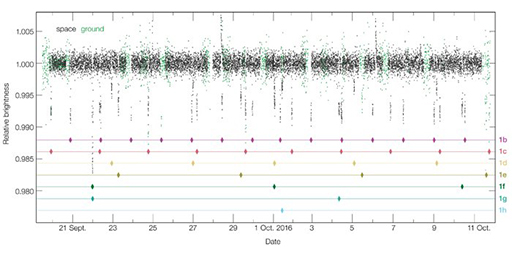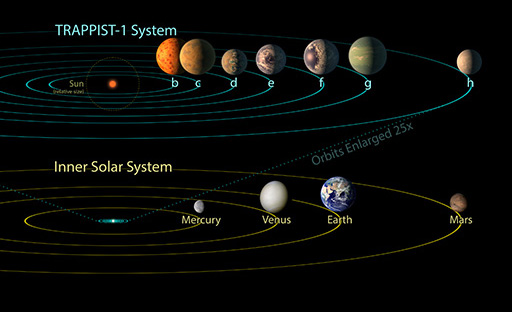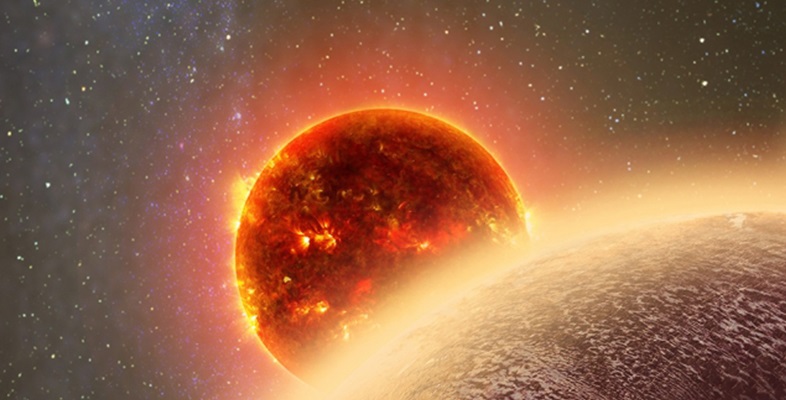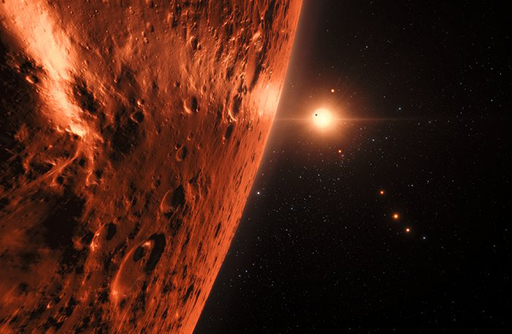4.4 The habitable ones? TRAPPIST-1 planets
In May 2016 one of the most remarkable exoplanet discoveries to date was announced, to surprisingly little fanfare. As you saw in Week 6, the ground-based telescope TRAPPIST had discovered its first planetary system with not one but three Earth-sized planets. They were orbiting a particularly small, cool M dwarf star within 40 light years of the Solar System. Further announcements increased the count to seven planets, all terrestrial-sized, the most of any system so far. All seven planets were transiting (Figure 23).

Kepler had found many Earth-sized planets before, so why was this one so exciting? TRAPPIST-1 is close enough for there to be a realistic chance of obtaining transmission spectra of the planets – and three of them are considered to be in the habitable zone of the parent star. In Week 6, you learned about the habitable zone – it means that liquid water might be present on the surface of that planet, and so there is a possibility that the planet has an Earth-like atmosphere and conditions.

Astronomers rushed to conduct the first spectroscopic study of the planets, using the Hubble Space Telescope. These preliminary investigations left a number of scenarios that would be consistent with the results, but they pave the way for the future. As with GJ 1132 b, it seems we will have to be patient, but it’s likely that we will be able to improve on these studies in just a few years’ time.
The TRAPPIST-1 planets lead nicely into next week’s work when you will look at future observatories, including the one that might uncover the secrets of this captivating system.
Activity 4 The TRAPPIST-1 planetary system
See if you can find out anything more about the TRAPPIST-1 planetary system using the internet. Write a bullet-pointed summary of what is known.
Answer
There will be new studies of this system as time progresses, so you should be able to find out more than what is listed here – this is a start!
- The densities of the seven planets range from 3.4 g/cm3 to 5.6 g/cm3.
- All of the seven planets may have regions where liquid water could exist on their surface.
Activity 5 Life on another planet
List all the things you can think of that are necessary for life to exist. Does the discovery of the TRAPPIST-1 system make you think life on another world is likely or unlikely?
Answer
We could devote a whole course to the definition of life, but we will stick to life as we know it on Earth: water, stable conditions amenable to the formation of complex carbon-based molecules like DNA, not too much harmful radiation, a source of energy.
The TRAPPIST-1 planets are orbiting a star which is very close to the Sun, at least ‘close’ in the context of the size of our Galaxy. Low-mass planets orbiting dim stars are intrinsically quite difficult to find and study. The fact that we are finding potentially habitable planets so close to us tends to suggest that the Galaxy might be full of such planets. Some of these could fulfil requirements like those above. So, there might be planets out there that we’d be able to walk around on.

